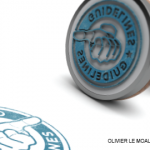Avoiding real and apparent conflicts of interest is a fundamental principle of guideline development, but what should we do when every thought leader is conflicted? An example of this conundrum in rheumatology has been the ACR’s ongoing effort to establish guidelines for the management of lupus nephritis, which has been stymied by the fact that most experts in the field have led or participated in clinical trials funded by industry. Can this dilemma be resolved?
What is a conflict of interest (COI)? In 2009, the Institute of Medicine published its seminal report, Conflict of Interest in Medical Research, Education and Practice.1 To paraphrase its definition:
A conflict occurs when a set of circumstances or relationships increases the risk that primary interests (e.g., protecting the integrity of research or the welfare of patients) will be neglected because of secondary interests (e.g., research funding, consulting fees, honoraria, favors to friends, family, students or colleagues). It is the set of circumstances, rather than any particular decision, that creates the conflict. There is no implication that any individual is improperly motivated.
A systematic literature review found favorable recommendations for drugs or devices were 26% more likely when members had financial COI, and for opinion pieces the relative risk was more than double.2 Having financial links with multiple companies doesn’t cancel the conflict of interest because multiple sources often push in the same direction.3
Self-citation and confirmation bias: Bias need not be directly motivated by financial gain. Robert DeBroff, in his essay on confirmation bias and COI, quotes the ancient Greek historian Thucydides: “for it is a habit of mankind to entrust to careless hope what they long for, and to use sovereign reason to thrust aside what they do not fancy.”4
Confirmation bias includes citing evidence that validates one’s own beliefs while ignoring or misrepresenting evidence to the contrary.4 This is the strongest argument for taking an evidence-based approach to clinical practice guidelines, but many decisions in clinical care and in research are close calls, and in rheumatology, the level of evidence supporting decision making often depends on expert opinion, previous experience or isolated case reports/case series. Clinical practice guidelines will be accepted as valid only if those participating in the work are trusted to be impartial.1
The methodology used to create clinical practice guidelines, such as employing methodological experts, systematically reviewing the literature and linking recommendations to the evidence, can help mitigate COI.
At the ACR, guideline voting panels are independent of the core team leading guideline development, allowing for a layer of independent review.5 The principal investigator must be free of COI for at least one year prior to submission of their letter of intent, and no more than 49% of team members can have a COI. Individuals directly employed by commercial interests cannot participate.
Although, in an ideal world, no member of the guideline team will be conflicted, in a field as small as rheumatology this is often not possible.
Disclosure, an Imperfect Solution
ACR policy is that guideline project development group members, and others who contribute intellectually to the guideline development effort, must disclose all information regarding their relationships, including any possible COI, financial or otherwise. However, investigators don’t always disclose all payments.
In a study that used the Open Payments Database to analyze COI among authors of ACR clinical practice guidelines published in 2014, 36% of payments relevant to the guideline ($699,561 out of $1,961,362) went undisclosed.6 The ACR now provides reminders and links to the Open Payments Database as part of the disclosure process to help address this issue.
Ironically, some studies suggest that disclosure can actually lead to more biased recommendations. Two mechanisms are proposed: 1) strategic exaggeration (i.e., the tendency to provide more biased advice to counteract anticipated discounting) and 2) moral licensing (i.e., the often unconscious feeling that biased advice is justifiable because the audience has been warned).7
Educating guideline teams about such issues as confirmation bias is an important component of COI management. Parker and Bero, in a review of COI in clinical practice guideline development, recommend using predetermined criteria to assess and respond to the risk of bias in the interests of prospective members. They use this principle as a guide in the formation of the clinical practice guideline teams, but provide little guidance on how to manage conflicts during the actual process of guideline development.3 This may be less important in such fields as cardiology in which the pool of experts is large and conflicted members can be excluded from guideline panels, but in rheumatology, managing COI over the entire arc of guideline creation is needed.
At the ACR, “disclosure of relationships and management of potential or real COI are important at every level from prioritizing topics and selecting projects, through development and approval of final papers.”5 In practice, however, it is easy to lose track of COI over the long process of guideline development, which can take more than two years.
Establishing formal mechanisms to keep relationships visible over time can serve as helpful reminders to guideline leaders and team members. Such mechanisms could include requiring a verbal acknowledgement of relevant relationships at the start of each meeting—focused on those relevant to the day’s agenda—and explicitly linking industry relationships to specific commercial products (e.g., drug, device or vaccine). The group can then decide, through discussion or vote, whether to recuse the member from the discussion that day.
LN Guideline?
Will we ever have a clinical practice guideline for lupus nephritis?
Nephritis is one of the most dreaded complications of lupus, but it is also an area with a wealth of high-quality evidence. So why doesn’t the ACR have a clinical practice guideline for its management? It’s not for want of trying, but the process has been hampered by the difficulty of forming a majority-unconflicted core team. In the field of lupus nephritis, virtually all trials are industry funded, making it virtually impossible to identify unconflicted content experts.
How can the ACR shepherd this much-needed project forward and maintain its high standard of scientific integrity? To start with, the core team, literature review team, voting panel and, importantly, the principal investigator, could comprise individuals who are experts in the field of lupus, even if not specifically focused on lupus nephritis. The group could also include experts in guideline development, outcomes, clinical trials methodology and epidemiology.
Lupus nephritis trialists not directly involved in guideline development could potentially be used as outside consultants.8 Such consultants could be asked to identify clinical questions they consider critical for the literature review and could potentially lecture on such topics as outcome measures in lupus nephritis clinical trials.
Managing COI over the long process of guideline development will be key, including recusal of members from deliberating, drafting or voting on specific recommendations if necessary.
Where the evidence is strong, it will stand on its own two feet. Where it is weak or unclear, it will benefit from review by fresh and unconflicted eyes.
 Anne R. Bass, MD, is a rheumatologist at the Hospital for Special Surgery in New York. She is currently the chair of the ACR’s Committee on Ethics & Conflict of Interest, and she recently rotated off of the ACR Board of Directors. Dr. Bass is the principal investigator of the 2022 ACR Guideline for Vaccinations in Patients with Rheumatic and Musculoskeletal Diseases.
Anne R. Bass, MD, is a rheumatologist at the Hospital for Special Surgery in New York. She is currently the chair of the ACR’s Committee on Ethics & Conflict of Interest, and she recently rotated off of the ACR Board of Directors. Dr. Bass is the principal investigator of the 2022 ACR Guideline for Vaccinations in Patients with Rheumatic and Musculoskeletal Diseases.
References
- Institute of Medicine (US) Committee on Conflict of Interest in Medical Research, Education, and Practice. Conflict of interest in medical research, education and practice. Lo B, Field MJ, editors. Washington, D.C.: National Academies Press; 2009.
- Nejstgaard CH, Bero L, Hróbjartsson A, et al. Association between conflicts of interest and favourable recommendations in clinical guidelines, advisory committee reports, opinion pieces, and narrative reviews: systematic review. BMJ. 2020 Dec 9;371:m4234.
- Parker L, Bero L. Managing risk from conflicts of interest in guideline development committees. BMJ. 2022 Dec 6;379:e072252.
- DuBroff R. Confirmation bias, conflicts of interest and cholesterol guidance: can we trust expert opinions? QJM. 2018 Oct 1;111(10):687–689.
- American College of Rheumatology. Policy and Procedure Manual for Clinical Practice Guidelines. 2015. https://www.rheumatology.org/portals/0/Files/ACR%20Guideline%20Manual_Appendices_updated%202015.pdf.
- Wayant C, Walters C, Zaaza Z, et al. Evaluation of financial conflicts of interest among physician-authors of American College of Rheumatology clinical practice guidelines. Arthritis Rheumatol. 2020 Sep;72(9):1427–1434.
- Loewenstein G, Sah S, Cain DM. The unintended consequences of conflict of interest disclosure. JAMA. 2012 Feb 15;307(7):669–670.
- Torgerson T, Wayant C, Cosgrove L, et al. Ten years later: a review of the US 2009 institute of medicine report on conflicts of interest and solutions for further reform. BMJ Evid Based Med. 2022 Feb;27(1):46–54.
Editor’s note: If you have a comment for the author or a case you’d like to see in Ethics Forum, email us at [email protected].



